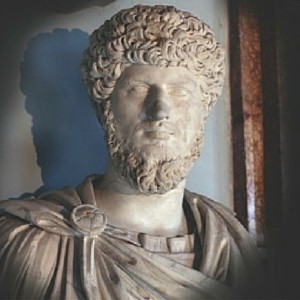"Immortales: The Hall of Emperors of the Capitoline Museums, Rome" brings to the United States for the first time a selection of 20 busts from the collection of the world’s oldest museum, the Capitoline in Rome.
The exhibition, which opens Sept. 4 at the Fred Jones Jr. Museum of Art on the University of Oklahoma Norman campus, offers a survey of Roman portraiture from the age of Augustus (1st century, B.C.) to the late Roman Empire (5th century, A.D.).
Sculpted busts of emperors, empresses and patricians reveal how portraits helped craft private and public images of distinguished individuals for ancient Roman audiences as well as for posterity. The exhibition will be on display through Dec. 6.
"Immortales: The Hall of Emperors of the Capitoline Museums, Rome" is made possible by the generous support of Enel Green Power North America, a leading owner and operator of renewable energy plants in North America. In Oklahoma, the company owns and operates four wind farms, with two additional wind sites under construction.
The exhibition focuses on three themes: the propagandistic aspects of the art form; fashion, especially coiffure as an indication of social status, character and ideology; and the role of marriage, divorce and adoption in the structuring and preservation of the fabric of Roman society.
Additional public educational programs scheduled at the museum to coincide with the exhibition include a Family Day Sept. 20, a gallery talk Sept. 22 and an afternoon symposium Oct. 22.
More information about the exhibition and programs is available on the museum’s website at ou.edu/fjjma.
The Fred Jones Jr. Museum of Art is located in the OU Arts District on the corner of Elm Avenue and Boyd Street, at 555 Elm Ave., on the OU Norman campus. Admission to the museum is complimentary to all visitors, thanks to the generosity of the OU Office of the President and the OU Athletics Department. The museum is closed on Mondays. Information and accommodations on the basis of disability are available by calling (405) 325-4938 or visiting ou.edu/fjjma.
ABOUT THE CAPITOLINE MUSEUMS
Located in the political and religious center of ancient Rome, site of the Temple of Jupiter and overlooking the Forum, the Capitoline Museums, which were erected between the 1200s and the 1400s, sit atop one of the Seven Hills of Rome.
In 1471, Pope Sixtus IV inaugurated the collection by donating to the Roman Senate four ancient bronze sculptures with the expressed wish to establish an institution for ancient masterpieces that would testify to his zeal for antiquity. Sixtus’ donation represented the "Thesaurus Romanitatis," an invaluable collection treasured by the Church and safeguarded from pillaging throughout the Middle Ages.
For the occasion, Sixtus IV commissioned Michelangelo with the redesign of the façades of the "Palazzo Senatorio" and the "Palazzo dei Conservatori," as well as the newly erected "Palazzo Nuovo" (also a project of Michelangelo’s).
Eventually relocating from the "Palazzo dei Conservatori" to the "Palazzo Nuovo," the Capitoline Museums were established officially in 1734 to the display of the legacy of Imperial Rome. The complete Hall of Emperors in the "Palazzo Nuovo" contains 67 busts at present, the result of a 19th-century curatorial choice to create a survey of Roman portraiture from the Republican period to the late-Roman empire. Immortales displays 20 works from the Hall of Emperors in the Lissa and Cy Wagner Gallery at the Fred Jones Jr. Museum of Art.
IMAGE CREDIT
Portrait of Lucius Verus (160-170 A.D.)
Luna Marble
Capitoline Museums, Rome



